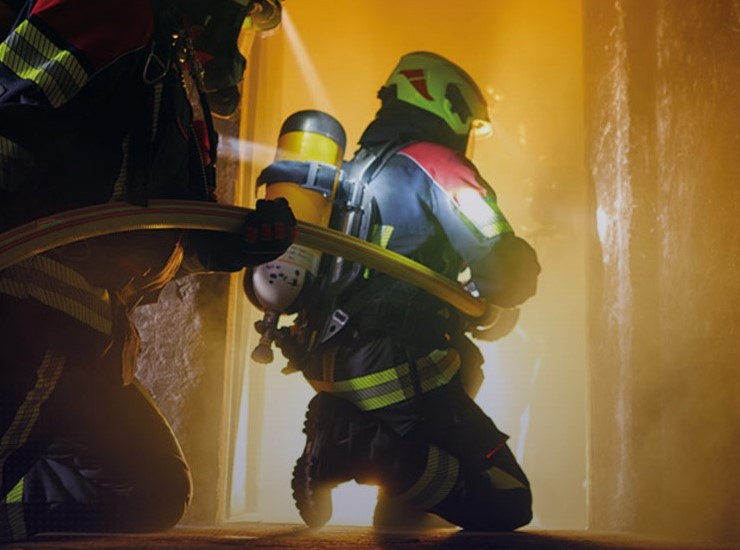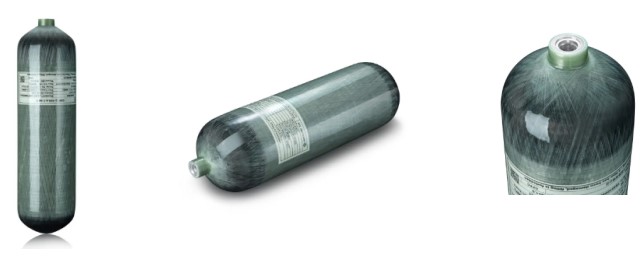For decades, steel cylinders reigned supreme in the realm of portable gas storage. However, the rise of carbon fiber technology has shaken things up. This article delves into the head-to-head battle between 9.0L carbon fiber and steel gas cylinders, analyzing their strengths and weaknesses in terms of weight, capacity, and lifespan.
The Weightlifting Match: Carbon Fiber Takes the Crown
The most striking difference between these two materials is weight. A 9.0L steel cylinder can weigh significantly more – up to twice the weight – compared to its carbon fiber counterpart. This dramatic weight reduction offers several advantages for carbon fiber:
-Enhanced Portability: For activities like scuba diving, paintball, or medical emergencies, lighter cylinders translate to easier carrying, improved maneuverability, and reduced user fatigue.
-Ergonomic Benefits: Lighter cylinders reduce strain on the back and shoulders, minimizing the risk of musculoskeletal injuries associated with heavy lifting.
-Transportation Efficiency: In scenarios where multiple cylinders need to be transported, the lighter weight of carbon fiber allows for increased payload capacity, potentially reducing the number of trips required.
Capacity Considerations: A Not-So-Clear Winner
When it comes to capacity, the playing field is a bit more even. A 9.0L cylinder, regardless of material, offers the same storage volume for compressed gas. However, there are some nuances to consider:
-Wall Thickness: Carbon fiber’s superior strength-to-weight ratio allows for thinner cylinder walls compared to steel. This can potentially create a small increase in usable internal volume within a 9.0L carbon fiber cylinder.
-High-Pressure Potential: Certain types of carbon fiber construction can handle higher pressures than steel. This might allow for a 9.0L carbon fiber cylinder to store a greater quantity of gas at a higher pressure rating, depending on the specific application.
The Lifespan Marathon: A Close Race
Both steel and carbon fiber cylinders boast impressive lifespans with proper care and maintenance. Here’s a breakdown:
-Steel Cylinders: Known for their durability, steel cylinders can last for decades with regular inspections and re-qualifications. However, they are susceptible to rust and corrosion, which can shorten their lifespan if not properly maintained.
-Carbon Fiber Cylinders: While not as extensively battle-tested over time as steel, carbon fiber cylinders are also known for their durability. They are immune to rust and corrosion, eliminating a major factor that can deteriorate steel cylinders.
The key to lifespan for both materials lies in proper maintenance and adhering to re-qualification procedures as mandated by regulations.
Beyond the Basics: Additional Factors to Consider
While weight, capacity, and lifespan are crucial factors, other considerations come into play when choosing between steel and carbon fiber cylinders:
-Initial Cost: Carbon fiber cylinders typically have a higher upfront cost compared to steel.
-Durability Against Impact: Steel cylinders might offer slightly better impact resistance due to their inherent weight and rigidity. However, carbon fiber is surprisingly strong and can withstand significant impacts if manufactured according to proper standards.
-Visual Inspection: Steel cylinders often have a smooth, easily inspected surface. Inspecting carbon fiber cylinders requires more attention to detail to identify potential fiber delamination or matrix cracks.
The Final Verdict: A Choice Tailored to Your Needs
There’s no single winner in the steel vs. carbon fiber battle. The optimal choice depends on your specific needs and priorities. Here’s a quick guide:
-Choose Carbon Fiber if:
>Portability and weight reduction are paramount.
>You value ergonomics and reduced user fatigue.
>The initial cost is offset by long-term benefits like potentially fewer replacements due to corrosion resistance.
-Choose Steel if:
>Upfront cost is a major concern.
>Your application prioritizes maximum impact resistance.
>You are comfortable with the increased weight and potential for rust or corrosion over time.
The Future of Gas Cylinders: A Blend of Strengths
The competition between steel and carbon fiber is ultimately driving innovation. As technology advances, we can expect even lighter, stronger, and more versatile gas cylinder solutions for the future.
Post time: May-09-2024


